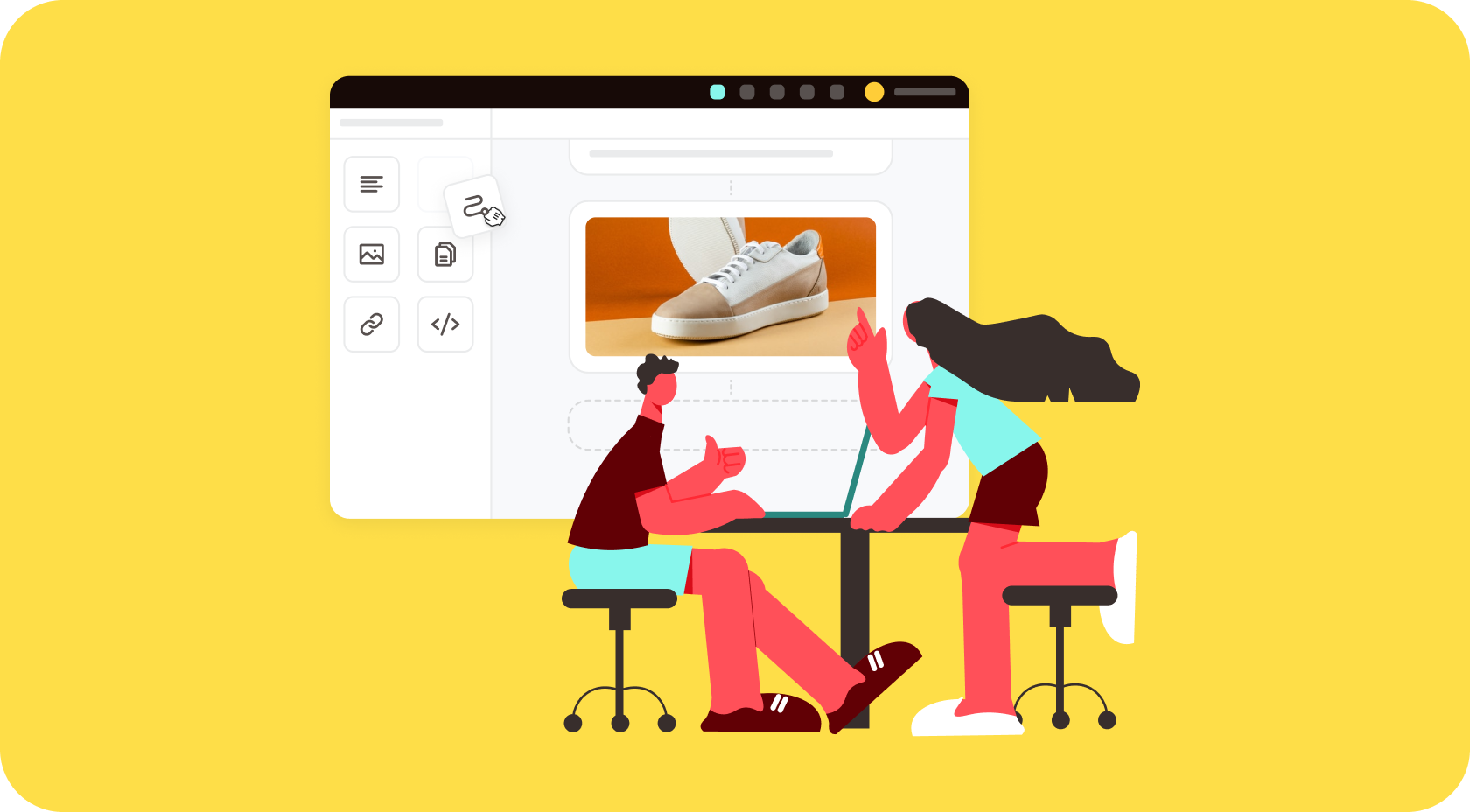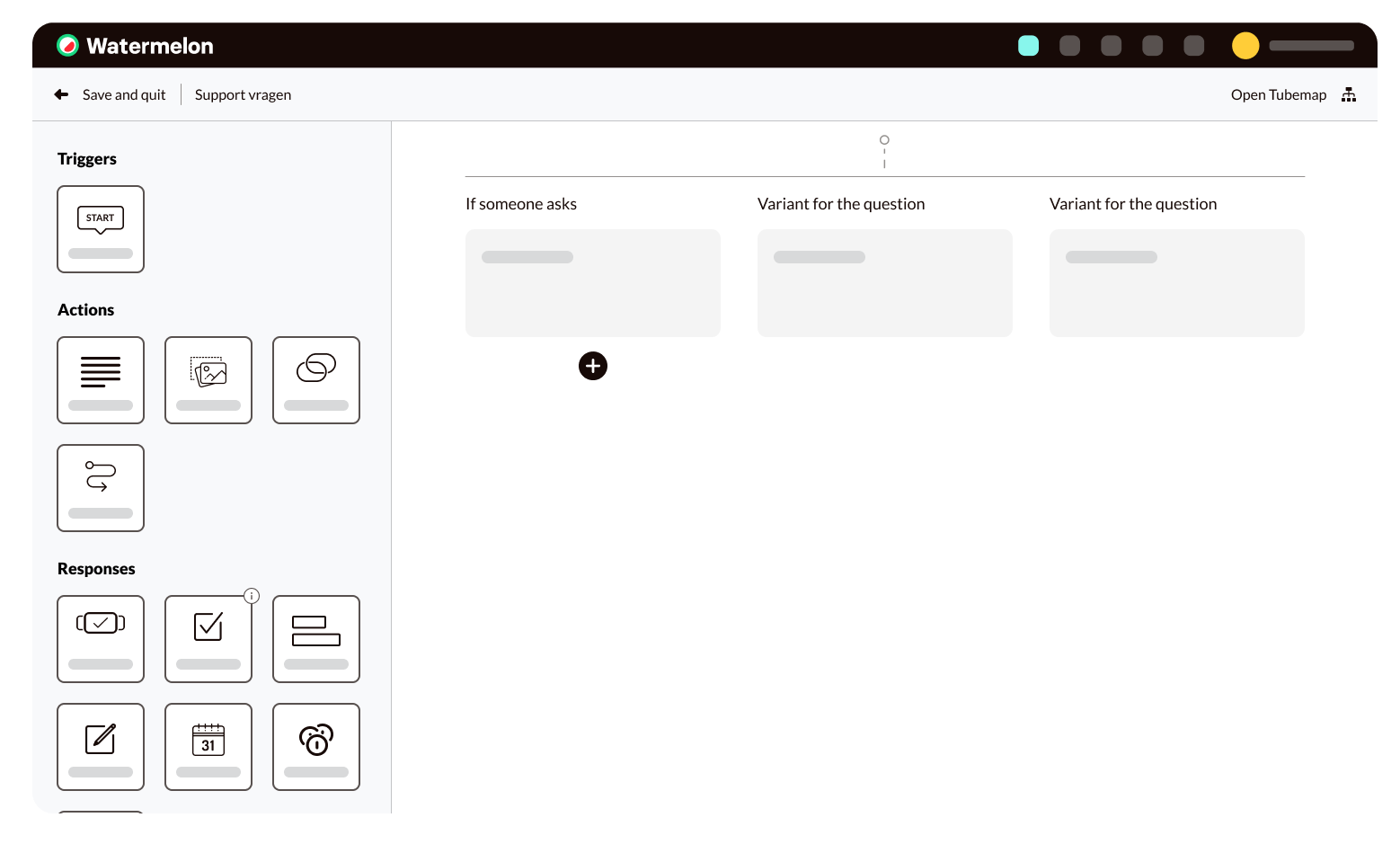Watermelon guide
The chatbot guide for beginners
Everything you need to know about the first steps in the world of chatbots.
Table of contents
How to build a chatbot
Having seen the many different possibilities of Conversational AI, it’s no surprise you might ask yourself “how do I build a chatbot?”. Don’t worry though, as we’ll talk you through the process of creating your very own digital assistant.

Goals and personality
The very first step towards building your own chatbot is simply thinking about which problem you want to solve first. Is your customer service in need of a break? Do you want to meet your commercial goals? Or are your colleagues spending too much time talking to the wrong people? As soon as you identify where your needs lie, it becomes easy to think of the ways you want to implement your new chatbot.
Now that we have the goal to achieve, let’s map out the basic structure of your chatbot. Think about the questions it needs to answer, the way it needs to answer them and what questions it should ask in return. Here we also make sure that your chatbot is a perfect extension of your brand, as we’re also looking at the tone of voice, the personality, and the way your chatbot feels to whoever it’s talking to. After all, your new digital assistant will be an integral part of your team.
Concept
Next up are the conversations themselves. Because we have already thought of the structures, we can now focus on the actual contents of the conversations. The tone of voice and personality from the previous step will serve as a blueprint for the conversations, as phrasing of answers and questions are important to the overall Customer Experience. It’s also important to think about how your customers will navigate through the conversations; when will they type their responses and when will they click a button? Are they redirected to new pages on the website, or perhaps forwarded to a colleague? Make sure to keep the entire customer journey in mind when creating the chatbot conversations.
Creation
Once you have the concept of your digital assistant all worked out, it’s time for the exciting part: building your chatbot!

With your chatbot platform of choice, you can use your personality blueprint, structures and conversations to start building your chatbot. If you have chosen Watermelon as your chatbot platform, you can simply start by building conversations with our no-code chatbot builder. Creating the first version of your new digital assistant is as simple as adding different building blocks (or modules) to your conversations and building them up, step by step.
In Watermelon, part of building your chatbot is also creating the datasets for the Conversational AI. A dataset is a collection of questions and a few variants on those questions. After analysing the dataset, your chatbot will learn to recognise these questions, along with hundreds of other variations on these questions. With a good dataset, your chatbot will be able to recognise questions regardless of phrasing or spelling mistakes. The datasets can then be linked to the conversations, so that the chatbot can trigger the correct conversation or response when it recognises a question.
Testing
After building your chatbot, it’s time to put it to the test. Before your chatbot goes live, you want to make sure it works as you intended and there are no mistakes or loose ends. It is recommended that you include different people in the testing phase, so that you can get different perspectives and opinions. Think about asking your colleagues, or maybe a group of trusted clients to test out your chatbot and gather as much feedback as you can. This feedback can then be implemented in your chatbot to create a definitive version of your digital assistant.
Launch
The final step in building your very own chatbot is preparing it for launch. This final phase is all about the finishing touches and making sure everything is in order before bringing your digital assistant to life. These final touches include a final check to see if your conversations are all correct, if your chatbot has the right colours and avatar, and if you selected the correct channels for your chatbot.
Are all the boxes checked off and you have a ‘Go’ for launch? Then it’s time to press the big, green button and reveal your chatbot to the world!